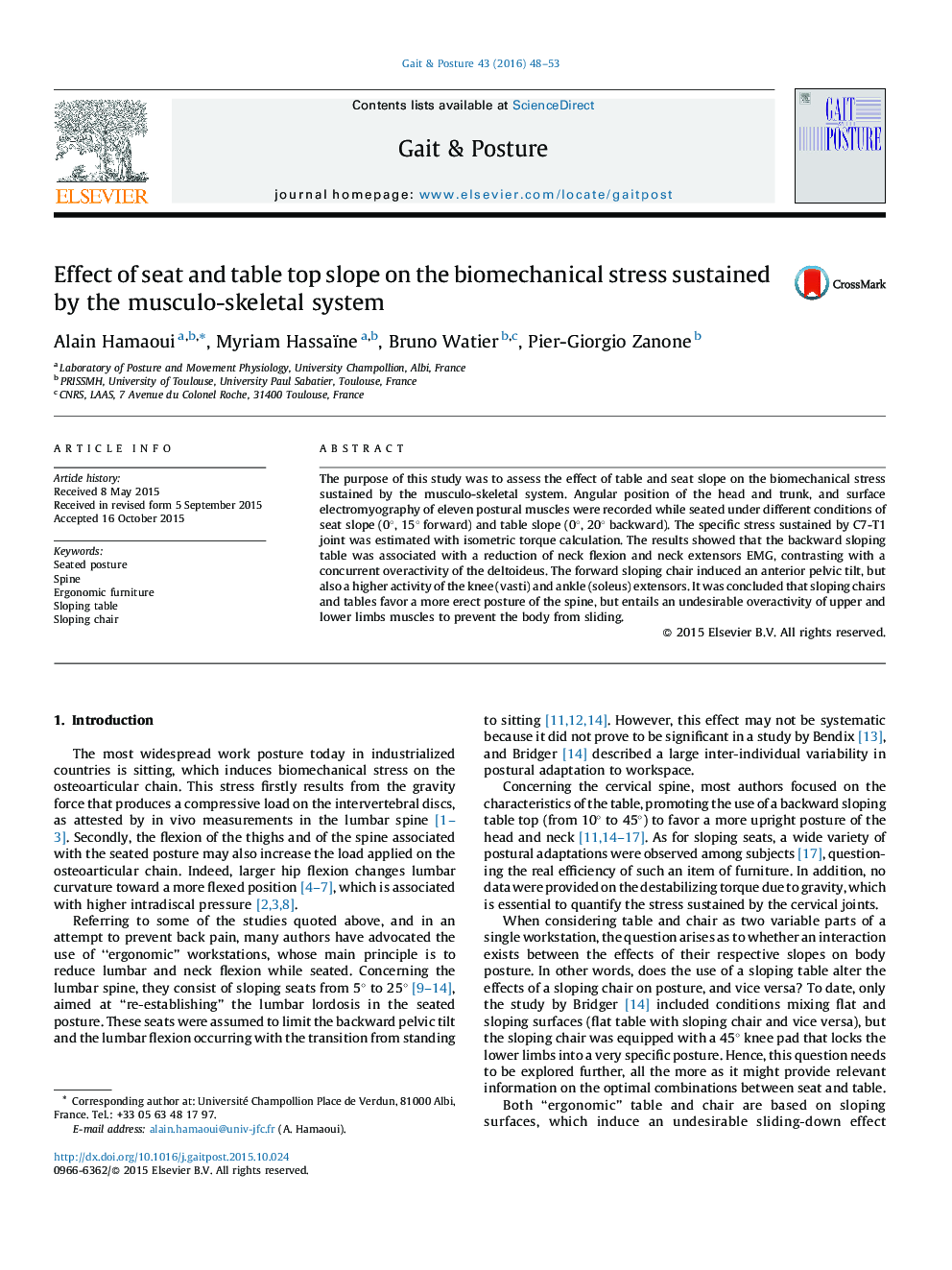| Article ID | Journal | Published Year | Pages | File Type |
|---|---|---|---|---|
| 4055827 | Gait & Posture | 2016 | 6 Pages |
•We explored the effect of table slope and seat slope on body posture.•Forward sloping seat and backward sloping desk straighten the spine.•Forward sloping seat requires an additional activity of the lower limb extensors.•Backward sloping desk is associated with a higher activity of the deltoideus.
The purpose of this study was to assess the effect of table and seat slope on the biomechanical stress sustained by the musculo-skeletal system. Angular position of the head and trunk, and surface electromyography of eleven postural muscles were recorded while seated under different conditions of seat slope (0°, 15° forward) and table slope (0°, 20° backward). The specific stress sustained by C7-T1 joint was estimated with isometric torque calculation. The results showed that the backward sloping table was associated with a reduction of neck flexion and neck extensors EMG, contrasting with a concurrent overactivity of the deltoideus. The forward sloping chair induced an anterior pelvic tilt, but also a higher activity of the knee (vasti) and ankle (soleus) extensors. It was concluded that sloping chairs and tables favor a more erect posture of the spine, but entails an undesirable overactivity of upper and lower limbs muscles to prevent the body from sliding.
